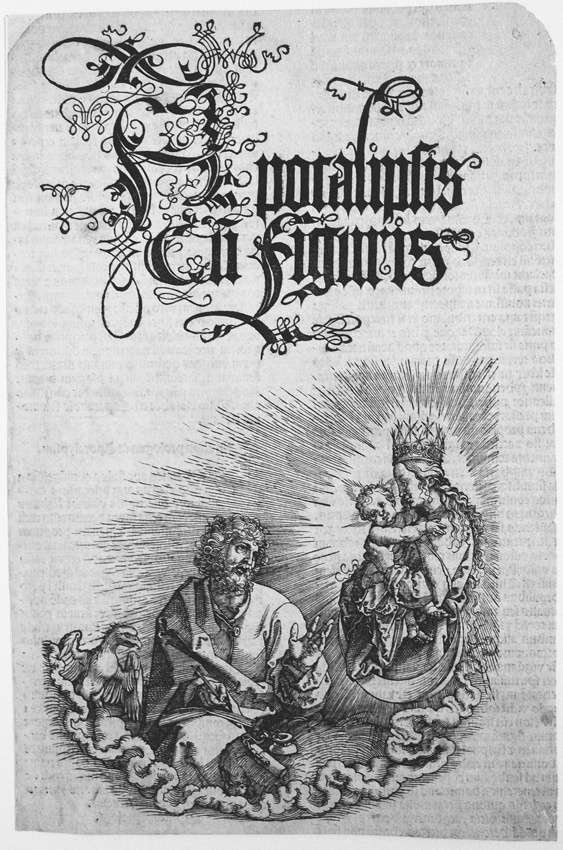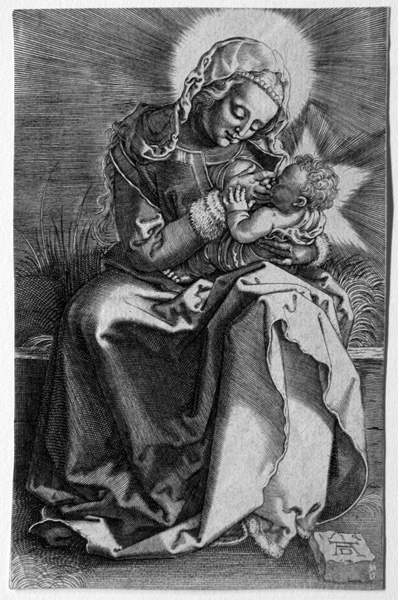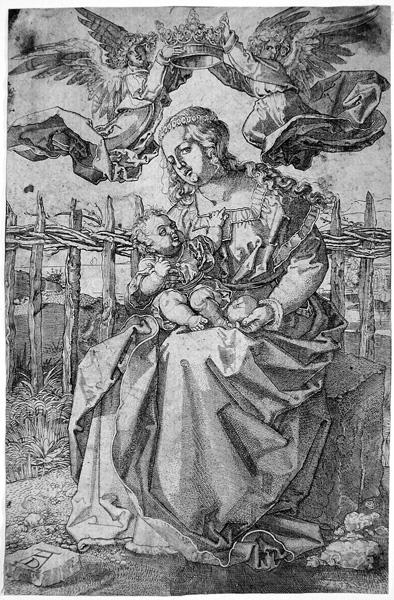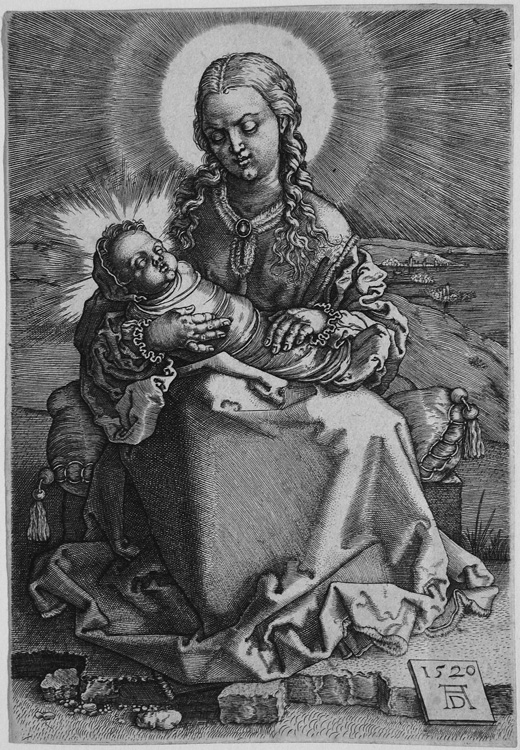Click image for BBB rating
See our Privacy Policy
cool="cool" width="818" height="7130" border="0" cellpadding="0" cellspacing="0" gridx="16" showgridx="showgridx" usegridx="usegridx" gridy="16" showgridy="showgridy" usegridy="usegridy" bgcolor="#99ccff">
|
|
|
 |
|
|
|
|
|
|
Welcome to Spaightwood Galleries, Inc.
120 Main Street, Upton MA 01568-6193
You can follow us on Facebook and Twitter!
We blog regularly on Facebook and announce special events and special sales on both sites.
Albrecht Durer (Nuremburg, 1471-1528) Original Woodcuts: The Holy Family
|
|
|
|
|
During his career, Durer returned many times to the images of the Holy Family and the Virgin and Child. We here present one depiction of the Holy Family and six depictions of the Virgin and Child, one splendid impression of the first published edition of The Madonna and Child appearing to St. John, which appeared for the first time on the titlepage of the 1511 Latin edition of the Apocaliptis cum figuris, two later impressions of Dürer masterpieces, and three copies of his engravings of the Virgin and Child, one by Jan Wierix, the other two by anonymous 16th-century engravers. Dürer's major work devoted to the Holy Family is The Life of the Virgin (1511), The Virgin also appears in the Large Woodcut Passion, the Small Woodcut Passion, and the Engraved Passion.
|
|
|
|
|
|
|
 |
|
|
Holy Family with the three hares (Bartsch 106, Strauss 36, Meder 312e). Original woodcut, c. 1496. One of Dürer's earliest major prints, this work was one of the first to reveal his genius. The three rabbits add a playful touch to this scene of domesticity. Strauss observes that the infant Christ is reading the scriptures at an early age. Ours is an impression printed c. 1560-1590 of a work that has been praised by Wolfflin as "radiant" in its revelation of "the abundance of life." A clear impression that is still printing quite well. The original woodblock of this print is in Princeton. Image size: 392x280mm. Price: SOLD.
|
|
|
 |
|
|
|
The Madonna with the Monkey (Bartsch 42, Strauss 21, Meder 30). Original engraving, c. 1498. A very late impression of a very early and beautiful engraving, only his second engraved portrayal of the Madonna and Child and his first not to include St. Joseph as well. There exist 14 copies of this work, suggesting its popularity in the Renaissance as does the number of impressions taken from Dürer's copper plate. Wöfflin and Tietze pointed to the influence of Leonardo and / or Verrocchio; Panofsky reminds us that the lost preparatory drawing of the monkey was also used for the painting of Christ and the Doctors. Panofsky also suggests that the monkey was a symbol of lewdness, greed, and gluttony, and that it was frequently associated with Eve; here the monkey is chained up and cannot do any harm. Finally, Panofsky praises the work in comparison with the earlier portrayal of the Madonna and Child: "this engraving marks a great advance in the realzation of space, volume, and texture. The figures detach themselves more clearly from the background" (in Strauss, Engravings, p. 70). One of Dürer's earliest and most charming versions of this scene, here in a very late impression on wove paper (old glue stains on the corners verso not showing through to the image). There is a small black dot in the clouds top center caused by a hole in the plate; there is also a small scratch going from the center of the Virgin's lower lip toward the left. Image size: 187x119mm (the full size of the engraving, before trimming) was 191x124mm. An early impression of this work sold at Christie's January 2013 Dürer auction for Please call or email for current pricing information (not including buyer's premium). Price: Please call or email for current pricing information.
|
|
|
|
|
|
 |
|
The Holy Family with Two Angels in a Vaulted Hall (Bartsch 100, Strauss 890, Meder 213d). Original woodcut, c. 1503-04. Strauss suggests that the "Modest Woodcuts" (Dürer's term) of which this is the first, are aimed at a "lay audience" unable to afford the price of the more elaborate woodcuts in The Life of the Virgin, which are contemporary with it and says "they are probably meant for housewives and peasants who frequented the main market place in Nuremberg, and fairs, like the one in Frankfurt, where the artist's wife frequently sold her husband's prints." He adds that Dürer carried "a quantity of these 'modest' woodcuts with him on his journey to the Netherlands in 1520-21 and recorded their sale in the diary of the trip" (p. 277). Dürer's monogram, Strauss points out, is "a sort of guarantee of genuineness, for he guarded his device jealously and effectively," pointing to Dürer's trip to Venice in 1505, at least partly to get the Signoria of Venice to force Marcantonio Raimondi to stop using Dürer's monogram on his copies of Dürer's prints. The first 11 in the series depict the Holy Family, the scene at Calvary, and a number of saints singly and in various combinations. Ours is a very good impression from later in the 16th century. Adam and Eve appear at the top of the the woodcut, Eve holding an apple and looking at Adam, Adam holding an apple and aparantly thinking about the consequences of his having taken it. The object on the wall behind the angels is St. Joseph's hat. Image size: 215x157mm. Price: Please call or email for current pricing information.
|
|
|
 |
|
|
|
|
|
Apocaliptis cum figuris / The Apocalypse with illustrations (Bartsch 60, Strauss 158, Meder 163). Original woodcut, 1511, for the 1511 Latin edition of The Apocalypse, the first to contain this woodcut of St. John's Mystical Vision of the Virgin and Child. Instead of St. Luke portraying the Virgin and Child in a painting or a drawing, Dürer portrays St. John, pen in hand, making a picture in words. As Strauss observes, the "fringe of clouds places the entire scene in the realm of the supernatural–distilled by the artist from the legend, because it is not accounted for in the text" (p. 456). By doing so, Dürer offers his book containing the complete text of the Apocalypse from the Bible and his own woodcuts illustrating that text as a collaboration between the Evangelist and himself. This impression of the titlepage is trimmed just into the text on the verso and the top corners have beeen rounded, but the image itself is complete, sharp, contrasty, and fresh. One of Dürer's masterpieces, here in a superb impression as it first appeared in the 1511 edition of Dürer's Apocalypse. Image size: 361x228mm. Price: Please call or email for current pricing information.
For the detail of the central image, see below.
|
|
|
|
|
|
|
|
|
 |
|
 |
|
|
|
|
Madonna Nursing (Bartsch 36 copy 4, Strauss 91-reversed). Reverse copy of Durer's c. 1518 engraving. A very good 16th-century impression on laid paper of this work which is based upon one of Durer's late masterpieces. Heller notes that the work was copied by Wierix and 6 other engravers. Trimmed within the platemark. The engraver's initals MD are printed on the right corner of the stone with Durer's monogram. size: 113x72mm. Price: Please call or email for current pricing information.
|
|
|
|
|
 |
|
Madonna Crowned by Two Angels (Bartsch 39, Strauss 87, Meder 19). Reverse copy of Durer's c. 1518 engraving. Good impression trimmed inside the platemark. From the existence of copies by Jacob Binck (c. 1500-1569), Jan Wierix, and 13 others, we may assume that this was one of Durer's most popular prints. Durer's original has been praised as "the prettiest and most elegant of Durer's Madonnas" (Kohler) and as having "a Raphaelesque equilibrium of loveliness & serenity" (Panofsky). Image size: 141x90mm. Price: Please call or email for current pricing information.
|
|
|
|
|
|
 |
|
Madonna with the Swaddled Infant (Bartsch 38, Strauss 94, Meder 40). A later impression of one of Dürer's most beautiful engravings. Meder says that early impressions are brownish; ours is gray, but still sharp. Ex collection Julian Manheimer (Lugt supp. 1840d, verso). Talbot notes, "There is a strange intensity to Durer's late Madonnas which makes them deeply moving but devoid of all charm" and adds "This rendition is colossal. There is barely enough room for the Madonna's halo to fit within the picture space. The term "sculptural," when applied to this print is less of a metaphor than it was previously. There is a perceptible "stoniness" to this print, as Panofsky observes, to the figure group amd an abstract geometrical rigidity to the drapery folds. The modelling, though handled with supreme virtuosity, lacks all decorative effect . . . one no longer experiences a sense of delight in following the schemes of hatchings aaround the contours of the figures." Talbot goes on to cite Panofsky's argument that this is a consequence to Dürer's conversion to the Lutheran faith with its emphasis on "the Apostles, the Evangelists, and the Passion of Christ" with the consequence of a stylistic change to a "forbidding, yet strangely impassioned austerity"; see Charles W. Talbot, ed. Durer in America: His Graphic Work (National Gallery of Art, 1971), p. 154. Image size: 143x96mm. Price: Please call or email for current pricing information.
|
|
|
|
 |
|
Madonna with the Swaddled Infant (Bartsch 38, Strauss 94, Meder 40). Reverse copy of Durer's 1520 engraving executed by Jan Wierix (Antwerp, 1549-1618) c. 1563 (Maquoy-Hendrixx 1705). Heller notes the existence of twelve other copies. A beautiful impression on laid paper of one of Wierix' most successful recreations of a Durer masterpiece. The Wierix brothers were among the most proficient engravers in Antwerp in the later 16th century. They chose to make engravings after Durer's masterpieces to prove their technical skills. Image size: 143x100mm. Price: Please call or email for current pricing information.
|
|
|
|
|
|
Spaightwood Galleries, Inc.
To purchase, call us at 1-800-809-3343 (1-508-529-2511 in Upton MA & vicinity) or send an email to spaightwood@gmail.com.
We accept AmericanExpress, DiscoverCard, MasterCard, and Visa.
We also accept wire transfers and paypal.
For directions and visiting information, please call. We are, of course, always available over the web and by telephone (see above for contact information). Click the following for links to past shows and artists. For a visual tour of the gallery, please click here. For information about Andy Weiner and Sonja Hansard-Weiner, please click here. For a list of special offers currently available, see Specials.
All works are sold with an unconditional guarantee of authenticity (as described in our website listing).
Go back to the top of this page.
Visiting hours: Saturday 10:00 am to 5:00 pm and Sunday noon to 6:00 pm and other times by arrangement.
Please call to confirm your visit. Browsers and guests are welcome.
|
|
|
|
|
|
|
|
|
|
|
|
|
|
|
|
|
|
|
|
|
|
|
|
|
|
|
|
|
|
|
|
|
|
|
|
|
|
|
|








